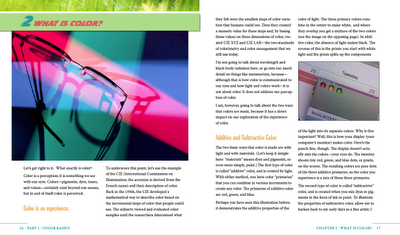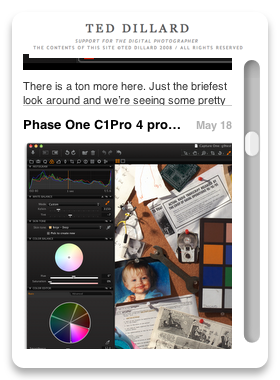The Smart Object Pipeline manuscript just went to the Editor! Here's the intro:
Welcome to the New World of Smart Objects!
Smart Objects let you, for the first time, get right back to the RAW file in a seamless, efficient processing path – the Smart Object pipeline. You can use all the power of RAW processing, a constructive editing process, getting to the “digital latent image”, the unprocessed data that first hit the camera’s sensor, at the click of a mouse. Coupling that with a solid Layers and Mask workflow gives you an all-new, and remarkably powerful way to get the most out of any camera’s file.
This is a new process, but it is a fully evolved and complete process. Of course, it means changing the way you work. Most of the classes I teach are fairly advanced photography students, and by now everyone has a pretty solid footing in Photoshop. I usually start out my classes by saying, “…bear with me. I know you have your Photoshop skills well established, you have your favorite methods, and that’s great, but for this semester, I want you to do it my way. After that, after you learn the whole system, after this class is over you can go back to whatever your favorite tools and processes are.” (Doesn’t that remind you of your mother? “While you’re living in THIS house, mister…”)
Well, here’s the thing. I learn this stuff mostly by the “hacker” method. I tear into the program, try out stuff, sometimes I break things, most times not, and that’s how I learn. I often reference books like this, or, my favorite over the years, the late Bruce Fraser’s “Real World” series when I get stuck. This method is a long, random road to a good, solid set of strategies. Sometimes, left to hacking alone, you never get there.
I’d be looking over someone’s shoulder and see a new way to do something. I had more than one designer see me do what I always do, and say, “Why the heck are you doing it THAT way?” I’d listen to speakers, attend workshops, watch how students are doing things, and realize there is a faster, better, and more professional way to work. Unless you’re looking for a better way, you’re going to get stuck in your own habits, and that could be costing you a lot of time, and a lot of freedom.
The other part of this is that, throughout the development of a remarkable tool like Photoshop, the thing simply does not work like it did when you started learning it. I learned Photoshop on version 3. (I started on this stuff just to make a web page. I never thought it would set me free of the darkroom!) Most of the tools, including RAW processing, Layers, Masks, and even fundamental Color Management, did not exist. As these tolls evolved I was forced to re-learn my processing. As Photoshop continues to develop, you’ve got to re-examine your old ways of working. There's a point where you have to consider stepping back from your old habits and methods, and take a fresh look at where the system is today.
The Smart Object process is still evolving and being refined, but for the most part is a complete, mature way to work, using the highest levels of methods, and the core philosophy of the Adobe “Non-Destructive” workflow. My challenge to you is, bear with me. Let me take you through the foundation of this process, the RAW file, layers and masks, and show you a few working strategies that I use. Try it out for yourself. It’s a new way to work, and it means you’re going to break a few old habits and develop some new ones. This process is based on a very select set of tools, yet can be used for virtually any task a photographer needs to create and process remarkable images.
Remember, this is all new, and also keep in mind where we are in the history of Photography - at what I often argue is the most profound point in the entire development of photography, the RAW digital file. This has changed the way we see, the way we create, and the processes we use. Like the introduction of 35mm film, the RAW file has introduced a different way to make a photograph, and we have to learn new methods to handle that. The Smart Object process gives me a better way to get at that RAW file.
Ansel Adams, a photographer with a remarkable vision, yet also a consummate technician and teacher, said:
"I believe that the electronic image will be the next major advance. Such systems will have their own inherent and inescapable structural characteristics, and the artist and functional practitioner will again strive to comprehend and control them."
He said this in 1981, shortly before he passed away, but this belied his constant effort to stay on the very forefront of the photographic process. Even then, photography demanded a constant attention to understanding the latest tools, techniques and materials, and that is truer now than ever.
I don’t I feel this is a process that is only for the “Advanced” user. I’ve started beginner classes in Photo 1 right out with RAW file processing, Layers, Masks and Smart Objects, and they pick it up as fast, or faster than the basic Adjustment Layer process.
So, step right up, leave your preconceptions behind you, and enter the Smart Object Pipeline!
Labels: Books, Smart Objects









